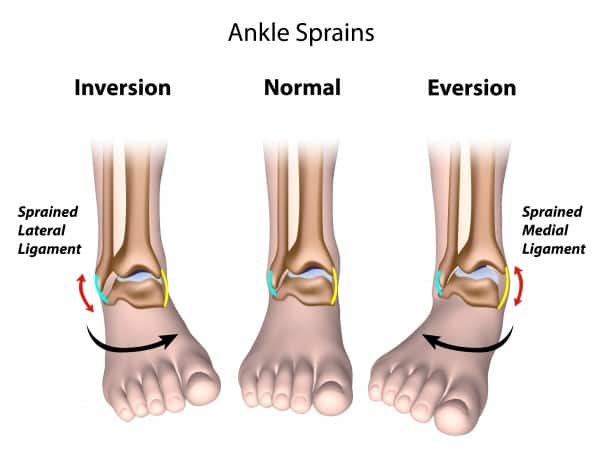What is an ankle sprain?
Ankle sprains are very common injuries, they are a painful traumatic injury to the soft tissues of the ankle, most of the time it happens whilst taking part in sporting activities. A sprained ankle is when one or more ligaments/structures supporting the ankle become stretched or torn. If not treated properly, long term problems can occur as a result.
Usually the ankle is rolled and results in an inversion or eversion sprain - this is when the ankle is either twisted inwards or outwards beyond its range of motion. The most common type of ankle sprain is the inversion sprain which cause pain along the outer side of the ankle caused by ‘rolling over’ the foot.
What causes an ankle sprain?
Usually an ankle sprains occurs when the foot suddenly twists or rolls beyond its normal range of motion, forcing the ankle joint out of its usual position. This can due to playing sports, running or walking on uneven surfaces, or wearing inappropriate footwear.
It can happen to anyone, however, some people are more susceptible to an ankle sprain than others, for example those who:
- Participate in certain sports, such as football or hockey
- Walk/run on uneven surfaces
- Wear unsuitable or unsupportive footwear
- Have ankle instability
- Have lax ligaments
- Have a history of trauma to the ankle
What are the signs and symptoms?
Some swelling or bruising can be visible around the ankle following injury. Pain or discomfort can occur when you bear weight on the affected foot, and it may be difficult to move the ankle as normal. Soft tissues such as; cartilage, tendons, ligaments and blood vessels may also be damaged due to the sprain.
The signs and symptoms may include:
- Pain in the ankle which can be described as throbbing
- Swelling
- Redness
- Bruising
- The ankle can feel warm to touch
- Difficulty weight-bearing
- Limp
- Inability to move the ankle
What would podiatry for ankle sprain involve?
A visit to a podiatrist would begin by obtaining a thorough history, which would include a medical history as well as a detailed account of the injury itself, and whether or not you have suffered any previous ankle injury or sprains. The history would then be followed by an examination of the ankle, followed by a biomechanical assessment. The purpose of the biomechanical assessment would be to assess the function of the foot and lower limb, which if not functioning correctly could be making you more susceptible to an ankle sprain. If a fracture of the ankle is suspected you may be referred for an X-ray.
The pain associated with an ankle sprain is due to inflammation, the aim of treatment is to therefore reduce any inflammation and to improve the function of the foot in order to prevent future sprains. The treatment for an ankle sprain includes:
- I.C.E: rest, ice, compression, elevation
- Anti-inflammatory advice
- Orthoses
- Ankle brace
- Strength training
- Range of motion training
- Footwear advice
- Activity modification
- Proprioceptive training
- Referral where appropriate
- Exercise prescription




